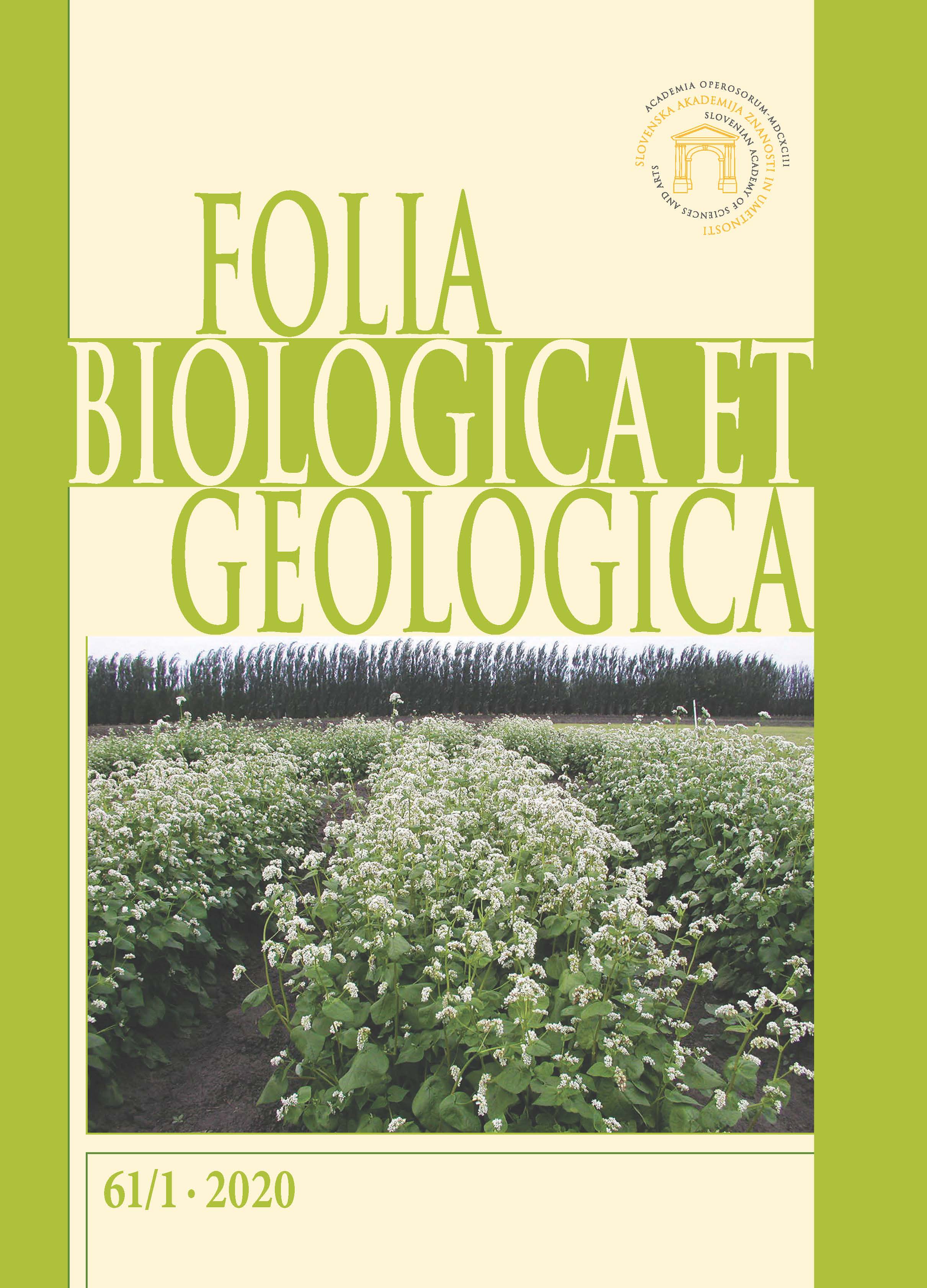Rutin content in buckwheat (Fagopyrum esculentum Moench, F. tataricum (L.) Gaertn. and F. cymosum Meissn.) growth in the Far East of Russia / Vsebnost rutina v ajdi (Fagopyrum esculentum Moench, F. tataricum (L.) Gaertn. in F. cymosum Meissn.) ...
DOI:
https://doi.org/10.3986/fbg0068Abstract
The paper presents results of the complex research of different species of Fagopyrum (F. esculentum Moench, F. tataricum (L.) Gaertn., F. cymosum Meissn.) on rutin content and their usage prospects as a resource of flavonoids. Relation between rutin content in the overground mass and the plant colour was found. Biological significance of rutin, prospects of its usage as a diagnostic trait in selection, are also shown in the article. Bio-chemical and technological traits of F. esculentum varieties cultivated in the Far East Russia were also studied and reflected in the paper. We therefore examined rutin content in the overground phytomass of the three species of Fagopyrum on the phase of mass flowering and discovered that high indices belong to: F. esculentum (Izumrud variety) ‒ 3.8 %, F. tataricum (sample k-62 from Canada) ‒ 4.4 % and F. cymosum (k-4231 from India) ‒ 4.1 %.
Rutin content in the hull of common buckwheat ranged from 0.08 till 0.20 %. Maximum rutin quantity was determined in the hull of Ussurochka (35.7 kg/ha), and minimum (17.8 kg/ha) in the hull of Pri 7. The studies show that the ash content, obtained after burning the hull of F. esculentum (600°C) is in average 2 %. The following elements were found in the ash: potassium, sodium, copper, silver, calcium, magnesium, zinc, aluminum, manganese, iron, nickel, chromium, phosphorus, and their concentration depend on variety and type of raw material of F. esculentum.
Key words: Fagopyrum esculentum, F. tataricum, F. cymosum, overground mass, hull, rutin
Izvleček
V prispevku so predstavljeni rezultati kompleksne raziskave različnih vrst rodu Fagopyrum (F. esculentum Moench, F. tataricum (L.) Gaertn., F. cymosum Meissn.) o vsebnosti rutina in možnosti njihove uporabe kot vira flavonoidov. Ugotovljeno je bilo razmerje med vsebnostjo rutina v nadzemni masi in barvo rastlin. V članku je prikazan tudi biološki pomen rutina, možnosti njegove diagnostične uporabe pri selekciji oziroma njegov pomen pri selekciji. V delu so bile proučene tudi biokemijske in tehnološke lastnosti sort F. esculentum, ki jih gojijo na Daljnem vzhodu Rusije. Zato smo določali vsebnost rutina v nadzemnih delih treh vrst rodu Fagopyrum v fazi cvetenja in ugotovili, da visoki indeksi pripadajo: F. esculentum (sorta Izumrud) ‒ 3,8 %, F. tataricum (vzorec k-62 iz Kanade) ‒ 4,4 % in F. cymosum (k-4231 iz Indije) ‒ 4,1 %. Vsebnost rutina v luščinah navadne ajde je znašala od 0,08 do 0,20 %. Največja količina rutina je bila določena v luščinah Ussurochka (35,7 kg/ha) in najmanjša (17,8 kg/ha) v luščinah Pri 7. Študije kažejo, da je vsebnost pepela, pridobljenega po upopelnjenju luščin F. esculentum (600°C), v povprečju 2 %. V pepelu so bili določeni naslednji elementi: kalij, natrij, baker, srebro, kalcij, magnezij, cink, aluminij, mangan, železo, nikelj, krom, fosfor, njihova koncentracija pa je odvisna od sorte in rastlinskega dela vrste F. esculentum.
Ključne besede: Fagopyrum esculentum, F. tataricum, F. cymosum, nadzemna masa, luščine, rutin




